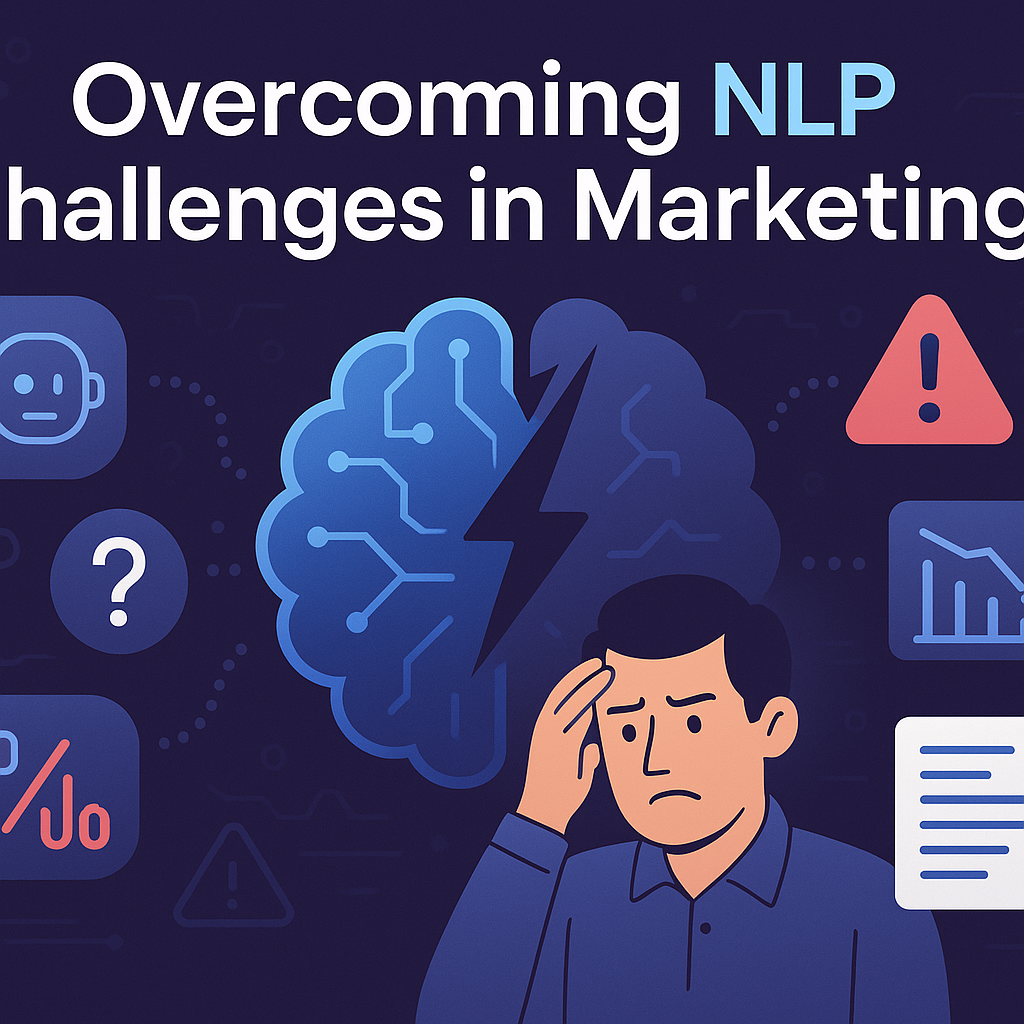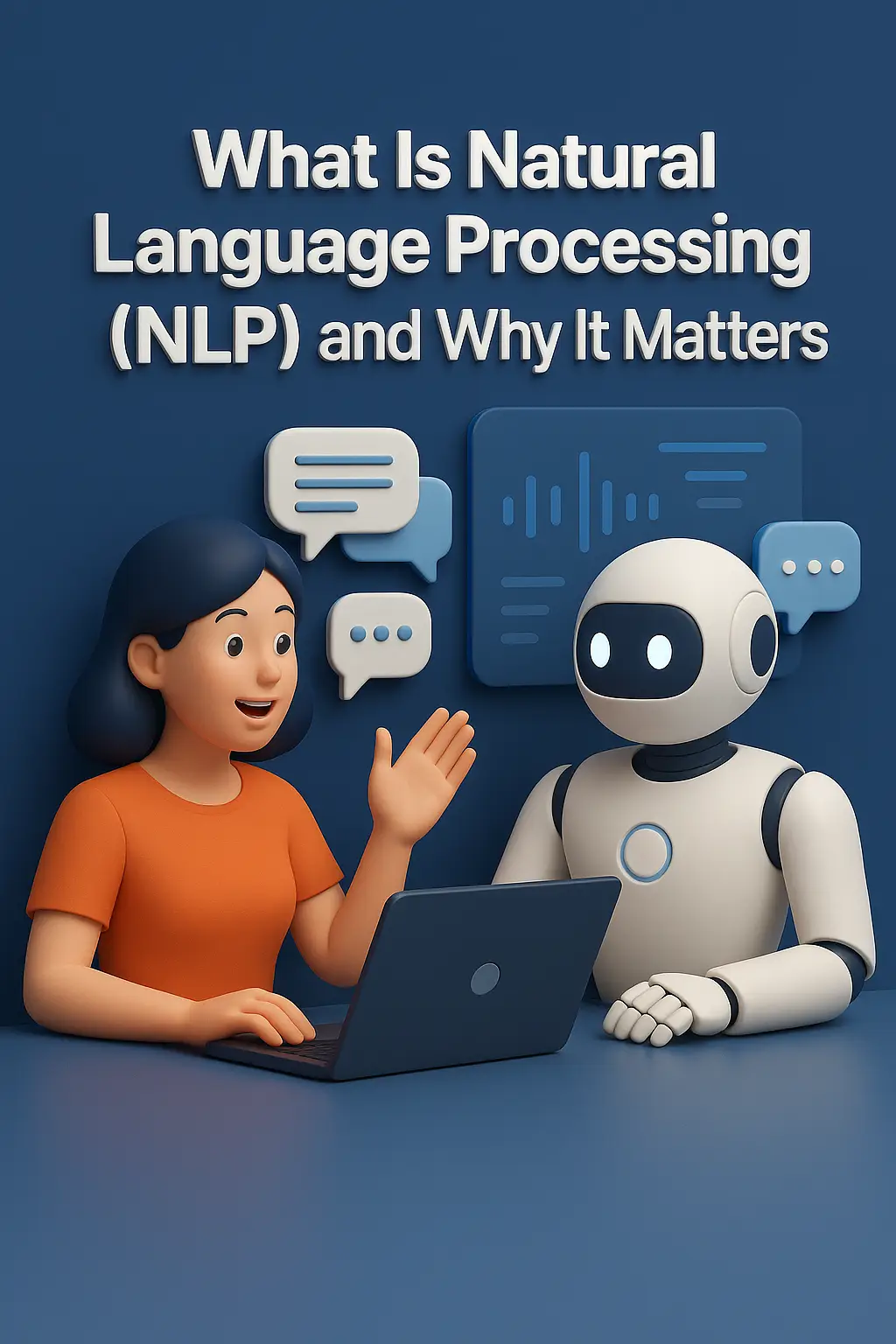Introduction
Natural Language Processing (NLP) plays a crucial role in modern marketing strategies, enabling businesses to understand customer sentiments, generate targeted content, and automate customer interactions. However, the adoption of NLP in marketing is not without its challenges. This post explores common NLP challenges in marketing and offers practical solutions to overcome them, ensuring businesses can effectively leverage NLP for optimized marketing campaigns.
Challenges in NLP for Marketing
- Text Ambiguity: Human language is inherently ambiguous. Words can have multiple meanings depending on context, which can complicate text analysis. For example, the word "bank" can refer to a financial institution or the side of a river, leading to incorrect interpretations in marketing content.
- Sentiment Analysis: Sentiment analysis, which aims to determine whether the sentiment behind a piece of text is positive, negative, or neutral, can be challenging. It struggles with detecting sarcasm, mixed sentiments, or cultural nuances in language.
- Data Preprocessing: NLP models require clean, well-structured data to function optimally. However, marketing data can be noisy, with a high degree of informal language, abbreviations, and emojis in social media comments, reviews, or emails.
- Contextual Understanding: Understanding context in language is crucial for NLP tasks like entity recognition, summarization, and translation. Marketing messages often rely on understanding brand tone, product features, or campaign goals, which can be complex for NLP systems to grasp.
- Multilingual NLP: In a globalized marketing environment, handling multiple languages can be a significant challenge. Models need to accurately analyze and generate content in different languages, taking into account regional dialects, idioms, and cultural references.
Mathematical Perspective: Overcoming Text Ambiguity with Word Embeddings
One way to address text ambiguity is through the use of word embeddings, which are mathematical representations of words in a continuous vector space. Word embeddings allow NLP models to capture the meaning of words based on context. A popular approach is using Word2Vec or GloVe (Global Vectors for Word Representation) to represent words as vectors in a high-dimensional space. The cosine similarity between word vectors can help identify the relationships between words and their contextual meanings:
\[ \cos(\theta) = \frac{A \cdot B}{\|A\| \|B\|} \]
Where:
- \(A\) and \(B\): word vectors for two words
- \(\theta\): the angle between the two word vectors
This formula calculates the cosine similarity between two word vectors, where a value closer to 1 indicates high similarity, and a value closer to 0 indicates low similarity. By using word embeddings, NLP models can disambiguate word meanings based on context, improving the accuracy of text analysis in marketing applications.
Practical Solutions to NLP Challenges in Marketing
- Improved Data Preprocessing: To address the challenge of noisy data, businesses can use preprocessing techniques like tokenization, stemming, and lemmatization to clean and structure textual data. Additionally, removing stop words and correcting misspellings can help improve the quality of input data for NLP models.
- Fine-Tuning Pretrained Models: Fine-tuning large pretrained models like BERT or GPT-3 on domain-specific marketing data can improve the accuracy of sentiment analysis, named entity recognition, and other NLP tasks. Fine-tuning helps models better understand the nuances of marketing language.
- Contextualized Word Embeddings: Using models like ELMo (Embeddings from Language Models) or BERT can help overcome the challenge of contextual understanding. These models generate dynamic word embeddings based on surrounding words, allowing for better disambiguation and contextual understanding of language.
- Sentiment Analysis with Multi-Class Classification: For sentiment analysis, implementing a multi-class classification approach can help better capture mixed sentiments. Using models that consider both positive and negative sentiments in different proportions can lead to more nuanced interpretations of customer feedback.
- Multilingual Models: To address the multilingual challenge, businesses can use multilingual NLP models like mBERT or XLM-R that are designed to handle multiple languages simultaneously. These models can ensure that content is analyzed accurately, regardless of language.
Real-World Applications of Overcoming NLP Challenges
- Customer Feedback Analysis: By overcoming sentiment analysis challenges, businesses can accurately gauge customer satisfaction and sentiment from reviews and social media comments, even when sarcasm or mixed sentiments are present.
- Personalized Marketing Campaigns: NLP models can analyze customer preferences and behaviors to generate personalized content. Fine-tuned models can create tailored email campaigns, social media posts, and product recommendations based on individual preferences.
- Multilingual Marketing Strategies: For global brands, multilingual NLP solutions help analyze and generate content in different languages, ensuring marketing messages resonate with local audiences while maintaining brand consistency.
- Content Optimization: By using contextual word embeddings and fine-tuned models, businesses can optimize their website content, ensuring it is relevant, engaging, and aligned with the brand’s voice and marketing goals.
Further Reading
Conclusion
Overcoming NLP challenges in marketing is essential for businesses that want to harness the power of AI to optimize their marketing strategies. By addressing issues like text ambiguity, sentiment analysis, and multilingual data, businesses can ensure that their NLP systems work effectively to provide valuable insights and enhance customer engagement. Implementing the right techniques and models will allow companies to stay ahead of the competition and create more personalized, data-driven marketing campaigns.








